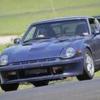Brake Pads For Sprints And Road
Announcements
-
Similar Content
-
Latest Posts
-
Nah, lots of insurance repairs on V36 and V37 for pedestrians deployments. Reasons ranging from possums, to extremely severe potholes have deployed them. However, paying for the full repair can still be upto $5k AU some people have noted!
-
Hi, i got 1998 r34 4 door auto abs model and its manual converted with bigbox when i bought it . I successfully find the neutral and reverse light wire but can’t find the speed signal wires for speedo drive. I know its grey plug but on my loom no grey plug with 2 wires . I opened the loom upto where it getting branch with other wire, i’m amazed they is no wire. So need help how to fix the speedometer problem. I search on google it says some r34 model measure speed from diff sensor. Is it right? I talk to a wrecker he say no this isn’t right, i’m kinda stuck. Please help
-
What!? US law does not apply to the rest of the world!!!
-
No requirement for JDM vehicles, which the 33 is, maroney label only needed in the US market for new cars I believe (Federal law stuff) Google knows all
-
Hopefully you can just unbolt them, thank them for their service, then bin them and not replace them Apparently the sensors like to set them off with only minor impacts at low speed It looks like they do a delete kit for some of these, but, it is costly
-







Recommended Posts
Create an account or sign in to comment
You need to be a member in order to leave a comment
Create an account
Sign up for a new account in our community. It's easy!
Register a new accountSign in
Already have an account? Sign in here.
Sign In Now